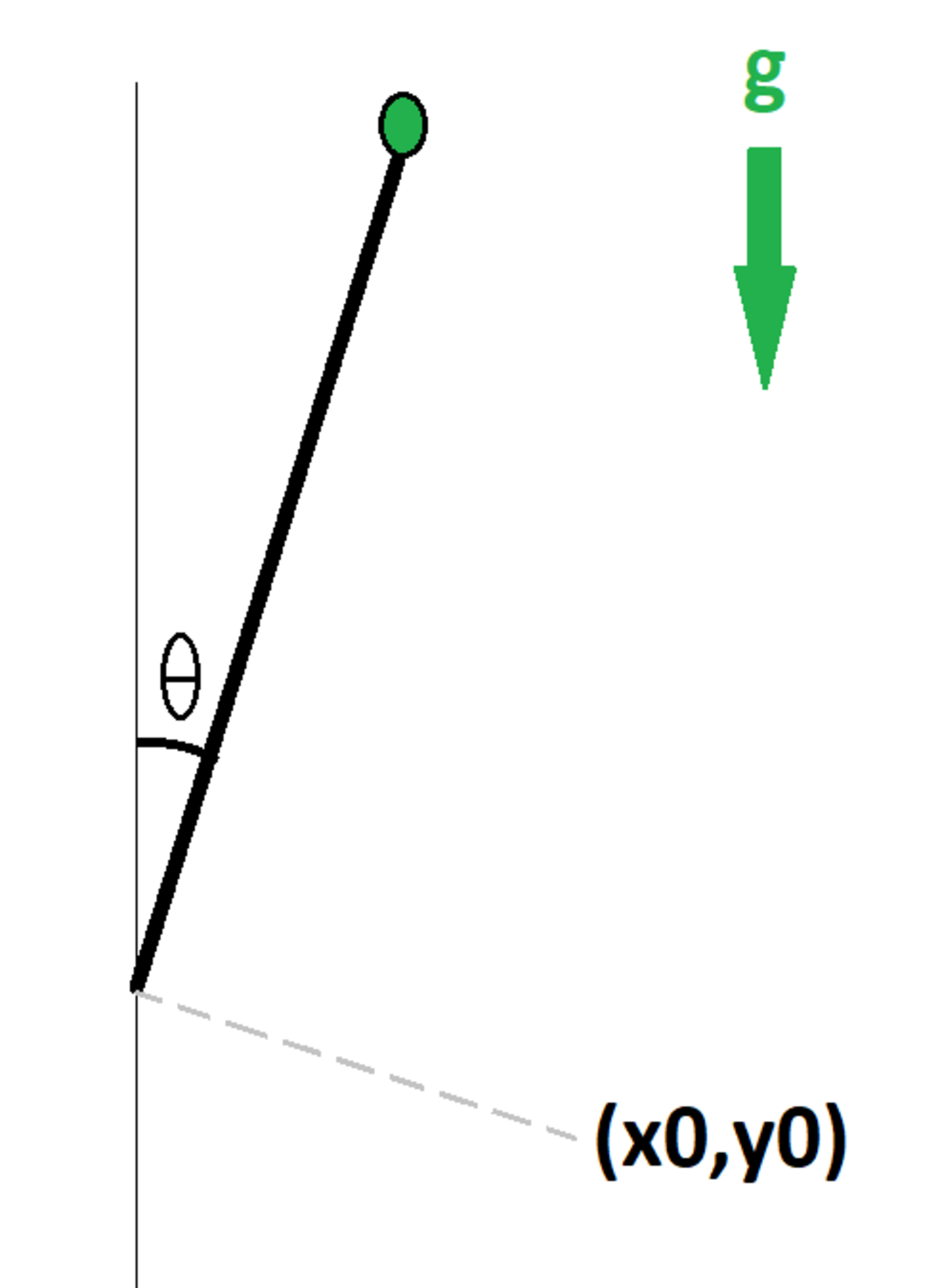Pendulum with Oscillating Base
A particle of mass is attached to one end of a massless rigid rod of length . The other end of the rod moves sinusoidally and has coordinates . The ambient gravitational acceleration is in the negative direction.
At time , the rod makes an angle degrees with the positive axis. The quantity is zero at this time.
What angle (in degrees) does the rod make with the positive axis at time ?
Bonus: Make a plot of the angle until . What remarkable behavior does this system exhibit?
Note: This is similar to a setup known as Kapitza's pendulum .

The answer is 1.684.
This section requires Javascript.
You are seeing this because something didn't load right. We suggest you, (a) try
refreshing the page, (b) enabling javascript if it is disabled on your browser and,
finally, (c)
loading the
non-javascript version of this page
. We're sorry about the hassle.
The coordinates of the mass are:
x = L sin θ y = 1 0 cos ( 2 0 π t ) + L cos θ
The kinetic energy of the mass is (expression shown after simplification:
T = 2 m ( x ˙ 2 + y ˙ 2 ) T = 2 m ( L 2 θ ˙ 2 + 4 π 2 sin 2 ( 2 0 π t ) + 4 π L θ ˙ sin θ sin ( 2 0 π t ) ) ⟹ T = 2 θ ˙ 2 + 2 π 2 sin 2 ( 2 0 π t ) + 2 π L θ ˙ sin θ sin ( 2 0 π t )
The potential energy of the mass is:
V = m g y ⟹ V = cos ( 2 0 π t ) + 1 0 cos θ
The equation of motion can be found by applying Lagrange's equation as follows:
d t d ( ∂ θ ˙ ∂ T ) − ∂ θ ∂ T + ∂ θ ∂ V = 0
Crunching out all derivatives yields:
θ ¨ = 1 0 sin θ − 4 0 π 2 sin θ cos ( 2 0 π t ) θ ( 0 ) = 1 8 0 5 π θ ˙ ( 0 ) = 0
I am leaving out the part involving numerical integration.
I will now focus on the bonus part of this problem. The truly remarkable quality of this system is that it is periodic and exhibits stability. One would have expected the pendulum to fall due to gravity from its point of unstable equilibrium. However, the bob of the pendulum oscillates between ± 5 ∘ about its natural unstable equilibrium. So the sinusoidal driving motion has a stabilising effect on the pendulum's motion.
A plot of angle vs. time is as follows: